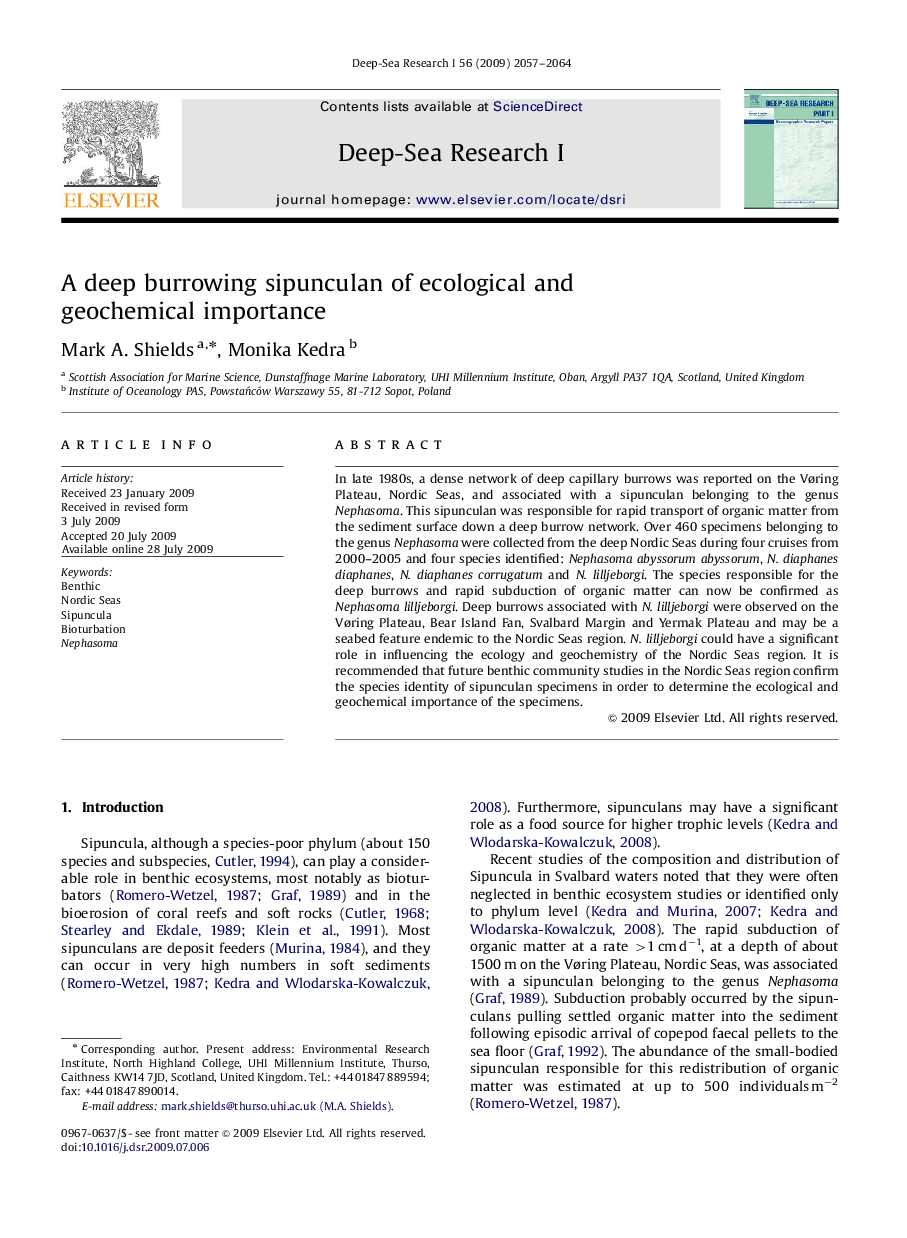| Article ID | Journal | Published Year | Pages | File Type |
|---|---|---|---|---|
| 4535026 | Deep Sea Research Part I: Oceanographic Research Papers | 2009 | 8 Pages |
In late 1980s, a dense network of deep capillary burrows was reported on the Vøring Plateau, Nordic Seas, and associated with a sipunculan belonging to the genus Nephasoma. This sipunculan was responsible for rapid transport of organic matter from the sediment surface down a deep burrow network. Over 460 specimens belonging to the genus Nephasoma were collected from the deep Nordic Seas during four cruises from 2000–2005 and four species identified: Nephasoma abyssorum abyssorum, N. diaphanes diaphanes, N. diaphanes corrugatum and N. lilljeborgi. The species responsible for the deep burrows and rapid subduction of organic matter can now be confirmed as Nephasoma lilljeborgi. Deep burrows associated with N. lilljeborgi were observed on the Vøring Plateau, Bear Island Fan, Svalbard Margin and Yermak Plateau and may be a seabed feature endemic to the Nordic Seas region. N. lilljeborgi could have a significant role in influencing the ecology and geochemistry of the Nordic Seas region. It is recommended that future benthic community studies in the Nordic Seas region confirm the species identity of sipunculan specimens in order to determine the ecological and geochemical importance of the specimens.
